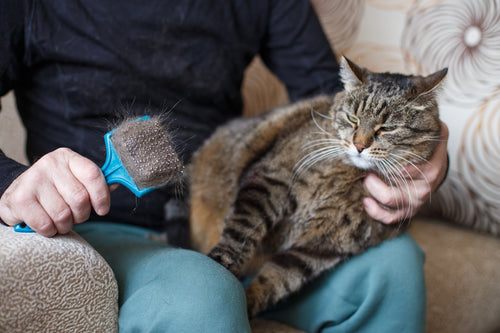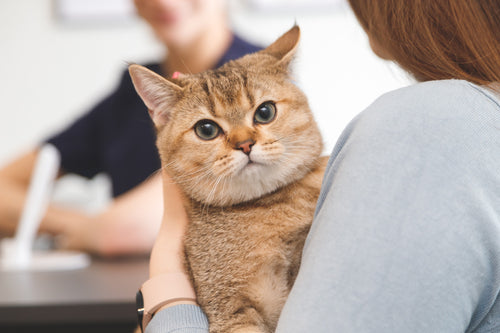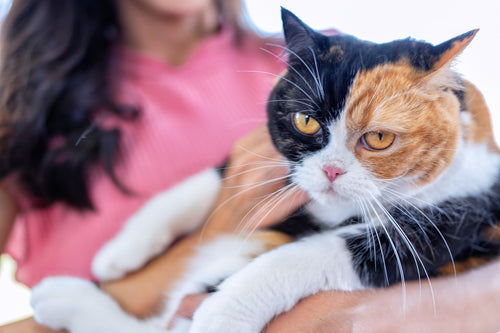Whether you’re still in the deciding phase or you’re committed to your future fur baby, adopting a new dog is no small feat. (Check out our new dog adoption checklist to ensure that you have all the necessary food and supplies, and to assess how seamlessly a new pooch will fit into your daily life.)
Once you’ve determined that bringing home a new dog is the right choice for you (congratulations!), take some time to pup-proof your home. Ideally, house-proofing and other preparation for a new dog should take place before the pup arrives at his new home. We understand, though—sometimes those irresistible puppy dog eyes result in a spontaneous adoption!
Maybe this is your first dog; maybe it’s your 15th. Either way, we recommend doing a room-by-room inspection of your home to provide a safe, pet-friendly environment for your furry friend.

Kitchen
Food and trash cans are a big concern here. Try to refrain from leaving food out on countertops, unless you’re sure that it’s out of reach from your dog. Even if the food itself is safe for dogs, packaging items such as plastic bags or twist-ties could pose a problem to your pooch.
Additionally, keep any cleaning supplies and sharp objects such as knives and scissors secured in a drawer or out of reach. Some dogs are determined enough to figure out how to open cabinets, so you may also want to consider childproof latches.
Dogs love to explore their environments through sniffing and tasting, meaning they could be very enticed by the contents of your trash can… especially if there’s food involved. Keep all trash cans securely covered so your dog can’t go digging through your garbage.

Bathroom
As with the kitchen, make sure all trash cans are inaccessible so your pup can’t go sticking his nose where it doesn’t belong.
Secure all medications, cleaning supplies, makeup, toothpaste, and anything else that may be toxic to dogs, too.
We also recommend keeping your toilet seat closed in order to keep your dog from trying to drink from the wrong (very large) bowl. This is especially important if you frequently use chemicals to clean your toilet.

Bedrooms
You know the drill—keep trash cans, cosmetics, lotions and perfumes, and cleaning supplies away from dogs. This also applies to laundry detergent and other products, regardless of their location in your home.
Shoestrings and buttons could be a choking hazard, so it’s best to keep them secured in a drawer or closet as well. For your own sake, you may want to keep your expensive clothes and shoes out of reach in case your new dog is an avid chewer.
Speaking of chewing… it’s also a good idea to keep any electrical wires away from your dog, too. A quick internet search will lead you to several creative cord-concealing options for your home.

Living Room
As mentioned above, you’ll want to conceal any cords in your living room that your pooch might mistake for a chew toy.
Put away games and other small objects that could be a choking hazard… and that you don’t want your dog to potentially ruin.
Do some research to make sure your house plants aren’t toxic to pets. If they are, move them to a spot where Fido can’t conduct any taste tests.
You may also want to pet-proof your carpet, too. Some pet owners are satisfied with washable rugs, while others put a plastic covering over high-traffic areas to prevent dirt and mud from seeping into the carpet.

Garage
Even if you don’t plan for your new dog to spend time in the garage unless he’s getting in the car, it’s never a bad idea to take some extra precautions. For example, if you tend to leave your garage door open during the day, make sure your dog isn’t able to escape onto the street.
Move chemicals and sharp objects to high places so they don’t tempt a curious dog. In the winter, be sure to thoroughly clean all antifreeze from the ground—or supervise your dog closely when he’s in the garage or outside—since it can be incredibly toxic to dogs.
Additional Considerations
There are times when it’s not feasible to keep all hazardous ingredients and objects away from your dog. In that case, it’s best to keep your dog away by using a dog fence or puppy pen. A baby gate can even do the trick.
If you already have pets in your home, you may need to spend some extra time and effort helping them get to know each other. Just because your new pup is friendly and outgoing doesn’t necessarily mean your older dog will immediately be happy with the new addition to the family.
Generally, you should continue feeding your new dog the same diet he was eating before, at least until he’s adjusted to his new environment. Once he seems comfortable and you’ve consulted with a vet, you can discuss alternative diet options.
Promote your pup’s overall health with Pet Honesty’s 10-for-1 Multivitamin. These tasty chews contain a blend of natural ingredients to support joint, immune, skin, and digestive health.
Sources:
https://www.americanhumane.org/fact-sheet/pet-proofing-your-home/
https://thebark.com/content/dog-proofing-your-home-room-room-guide
https://www.rover.com/dog-proofing-your-home/
https://www.akc.org/expert-advice/puppy-information/puppy-proofing-tips-for-your-home-and-yard/






